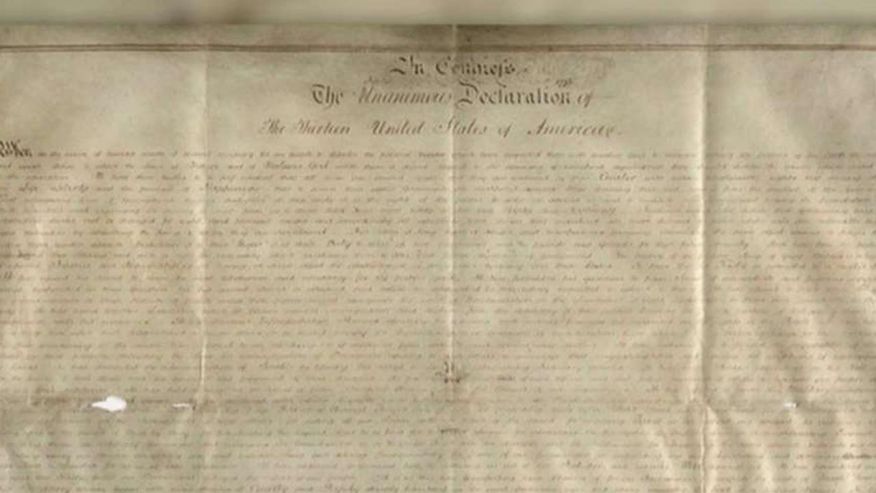
An rare copy of the Declaration of Independence has been found in an obscure records office in southern England.
Emily Sneff’s Facebook page says she’s “feeling accomplished” and rightly so. It’s not every day that a new hire — even one at Harvard University — stumbles upon a rare piece of American history that dates back to the likes of Thomas Jefferson, Benjamin Franklin, Samuel Adams and of course John Hancock. She found a rare copy of the Declaration of Independence.
“A month into my job at Harvard, I found this manuscript copy of the Declaration of Independence on parchment,” Sneff posted on Facebook on Friday. “In response to my first email about it, my remarkable boss, Danielle Allen replied: ‘Holy history, Batman.'”
The document has been dated to the 1780s, which is the period of political contestation leading up to the Constitutional Convention, according to the researchers. Measuring 24” x 30,” the document is on the same ornamental scale as the Matlack Declaration housed at the National Archives, the only other known parchment manuscript of this kind.
Researchers have named the copy “The Sussex Declaration.”
The first formal presentation on the Sussex Declaration was on Friday at Yale to which Allen declared: “History lives, there are things to be found, and things to be learned,” according to Sneff. The Yale event marked the 50th anniversary of Bernard Bailyn’s publication of “The Ideological Origins of the American Revolution.”
“Needless to say, I’m having a bit of a day. Thanks to everyone who has kept the secret for the last 20 months!,” Sneff added.
The parchment document is housed at the West Sussex Record Office in the United Kingdom and is believed to have been held originally by the Third Duke of Richmond, known as the “Radical Duke” for his support of Americans during the Revolution.
“The parchment is, however, American and is most likely to have been produced in New York or Philadelphia,” researchers said. “The team continues to work on identification for the clerk and commissioner of the parchment.”
Researches added that the parchment was commissioned by James Wilson, or a political ally, as a part of advocacy efforts on behalf of the federal Constitution.
They said that one of the most interesting features of the parchment is its treatment of the list of names of
signatories.
“In contrast to all other 18th century versions of the Declaration, on this parchment the list of signatories was not grouped by states. The team hypothesizes that this detail supported efforts, made by Wilson and his allies during the Constitutional Convention and ratification process, to argue that the authority of the Declaration rested on a unitary national people, and not on a federation of states,” researchers posited.
“On this parchment, the phrase ‘pursuit of happiness’ is followed by a dash only, and not by a period. The phrase “consent of the governed” is, however, followed by a period,” researchers said.








![Hurricane Matthew “Skull” Image: Is It Real or Fake? [Photo] Hurricane Matthew “Skull” Image: Is It Real or Fake? [Photo]Hurricane Matthew “Skull” Image: Is It Real or Fake? [Photo]](https://webtopnews.com/wp-content/uploads/2016/10/Hurricane-Matthew-“Skull”-Image-Is-It-Real-or-Fake-Photo.jpg)




